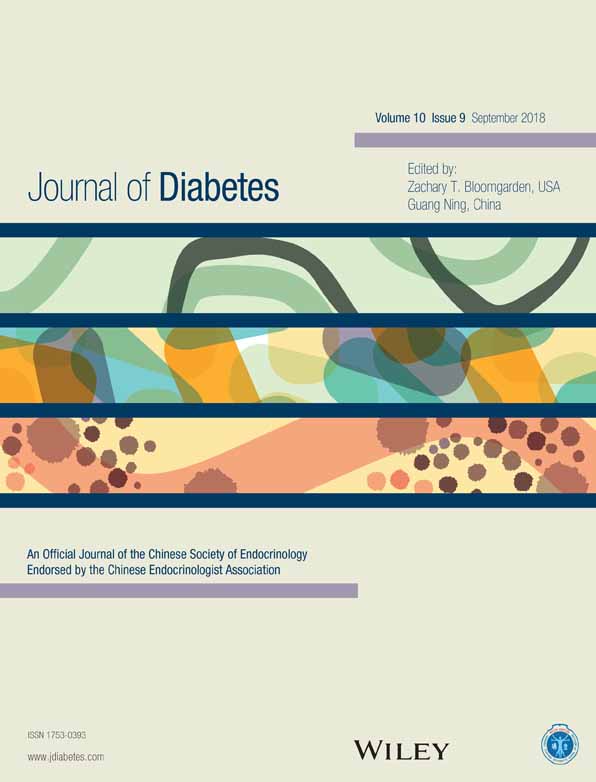Association between famine exposure in early life and type 2 diabetes mellitus and hyperglycemia in adulthood: Results from the China Health And Retirement Longitudinal Study (CHARLS)
生命早期饥荒暴露对成年后患2型糖尿病及高血糖症的影响:来自中国健康与养老追踪调查(CHARLS)的结果
Abstract
enBackground
Studies have revealed the association between famine in early life and type 2 diabetes mellitus (T2DM) in adulthood. However, studies on the Great Chinese Famine were not conducted nationwide. Because of regional variations in the severity of this famine, the results of regional studies are limited. This study explored associations between famine and T2DM in adulthood in a nationwide study.
Methods
The present study was performed on 7262 participants who were born between 1 October 1949 and 1 July 1966 using baseline data collected for the China Health And Retirement Longitudinal Study (CHARLS) in 2011. Participants were divided according to birthdate into cohorts with fetal, late, middle, and early childhood exposure and no exposure to famine. Logistic regression models were used to analyze the association between famine exposure in early life and the risk of T2DM and hyperglycemia in adulthood.
Results
For females, the risk of hyperglycemia was higher for famine-exposed than not exposed cohort (odds ratios [OR] 1.34 and 95% confidence intervals [CIs]: 1.34 [1.04–1.74], 1.48 [1.15–1.90], 1.38 [1.06–1.79], and 1.57 [1.25–1.98] for fetal, early, middle, and late childhood exposure, respectively), and this association was even stronger in female participants who lived in rural areas before the age of 16 years. In males, the risk of T2DM was lower for the early and late childhood exposure than no exposure cohorts (OR [95% CIs]: 0.65 [0.49–0.86] and 0.74 [0.56–0.98], respectively). [Correction added on 23 July 2018, after first online publication: Parts of the above ‘Results’ section have been corrected to interchange the citation of the words ‘late’ and ‘early’.]
Conclusion
Exposure to famine during early life can increase the risk of hyperglycemia in female adults, but may decrease the risk of T2DM in males.
摘要
zh背景
一些研究已经表明生命早期饥荒暴露与成年后患2型糖尿病(T2DM)风险的相关性。然而大多数中国大饥荒的相关研究只是以某个地区的人群作为研究对象, 并不是全国范围内的研究。因为中国的大饥荒的严重程度具有地区间的不平衡性, 所以这些研究的结果可能存在一些局限性。本研究在全国范围内探索了生命早期饥荒暴露对成年后患2型糖尿病及高血糖症的影响。
方法
利用中国健康与养老追踪调查(China Health And Retirement Longitudinal Study, CHARLS)中2011年全国基线调查数据, 本次研究对象为1949年10月1日到1966年7月1日之间出生的7262名参与者。根据出生日期将研究对象分为非暴露组、婴儿暴露组、童年早期暴露组、童年中期暴露组和童年晚期暴露组。运用logistic回归模型来分析生命早期饥荒暴露与成年后患2型糖尿病及高血糖症风险的相关性。
结果
胎儿期、童年早期、童年中期、童年晚期及暴露饥荒的女性成年后患高血糖症的风险均显著高于未暴露于饥荒者, 患病风险分别为未暴露于饥荒者的1.34倍(OR=1.34, 95% CI: 1.04-1.74), 1.48倍(OR=1.48, 95% CI:1.15-1.90), 1.38倍(OR=1.38, 95% CI:1.06-1.79), 以及1.57倍(OR=1.57, 95% CI:1.25-1.98), 并且此影响对16岁之前居住于农村地区的女性更为显著。童年早期(OR=0.65, 95% CI:0.49-0.86)和童年晚期(OR=0.74, 95% CI:0.56-0.98)暴露于饥荒的男性成年后患2型糖尿病的风险显著低于未暴露于饥荒者。[在首次在线出版后, 于2018年7月23日进行了校正:在上面的“结果”部分的第一句中将“晚”和“早”的位置调换]
结论
对女性来说, 生命早期暴露于饥荒者成年后患高血糖症的风险显著高于未暴露于饥荒者。而对男性来说, 生命早期饥荒暴露可能会降低成年后患2型糖尿病的风险。




